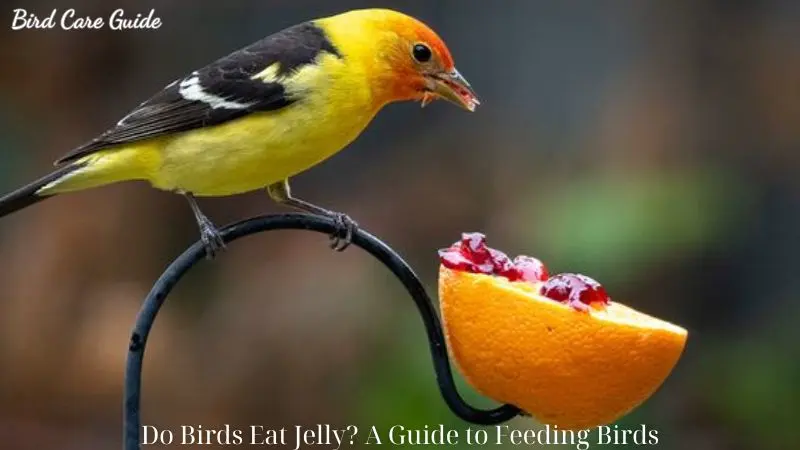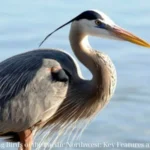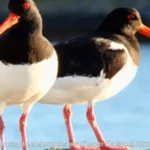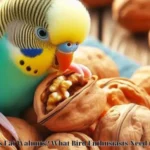Feeding birds can be a rewarding experience, bringing a variety of avian visitors to your yard and providing them with much-needed sustenance. Among the many foods that bird enthusiasts offer, jelly often stands out as a surprising but effective choice.
In this article, Bird Care Guide will explore the question “Do birds eat jelly?” and provides a comprehensive guide to bird feeding, including benefits, jelly types, best practices, and potential risks.
Understanding Avian Dietary Preferences
Natural Diets of Birds
Birds have diverse diets that vary significantly among species. Their natural food sources include:
- Seeds and Grains: Consumed by many songbirds and finches.
- Insects and Worms: A primary food source for insectivorous birds like swallows and warblers.
- Fruits and Berries: Eaten by frugivorous birds such as orioles and waxwings.
- Nectar: Preferred by hummingbirds and some other nectar-feeding species.
- Small Animals and Fish: Eaten by larger birds of prey and waterfowl.
Why Jelly?
Jelly, particularly grape jelly, has gained popularity among bird feeders because it is rich in sugars that provide a quick energy boost. This makes it especially appealing to certain bird species, particularly those that naturally consume fruits and nectar. The sweet taste and easy availability of jelly make it a convenient and effective food source for attracting birds.
Do Birds Eat Jelly?
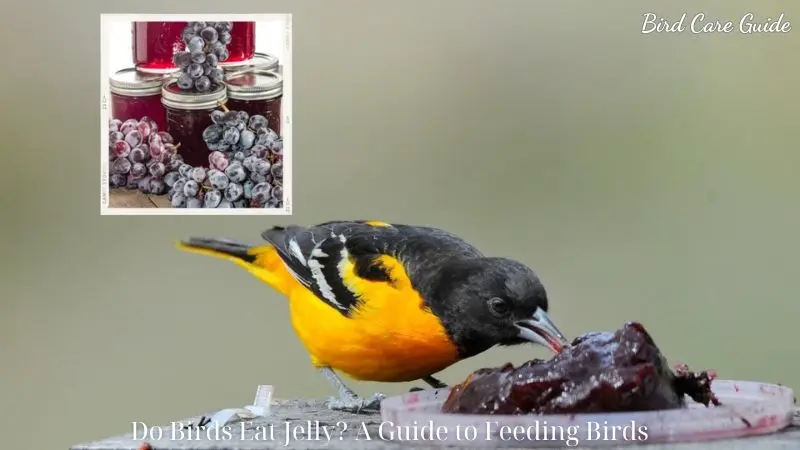
Do Birds Eat Jelly? The short answer is yes, some birds do eat jelly. Specifically, frugivorous birds such as orioles and tanagers are known to enjoy jelly as part of their diet. These birds are naturally attracted to sweet fruits and nectar, making jelly a suitable treat for them. However, it is essential to understand how to offer jelly to birds safely and effectively.
Species That Enjoy Jelly
Several bird species are known to enjoy jelly, including:
- Orioles: Perhaps the most famous jelly-eaters, orioles are attracted to grape jelly and can often be seen frequenting jelly feeders.
- Woodpeckers: Species such as the red-bellied woodpecker have been observed eating jelly.
- Tanagers: These colorful birds also enjoy the sweet treat.
- Catbirds: Known for their diverse diet, catbirds are often seen at jelly feeders.
- Hummingbirds: While they primarily consume nectar, hummingbirds may occasionally sample jelly.
Benefits of Feeding Birds Jelly
Feeding jelly to birds can offer several benefits, particularly during times when their natural food sources may be scarce.
Energy Boost
The high sugar content in jelly provides a quick and easily accessible energy source. This is especially beneficial during migration periods or in early spring when birds are actively foraging to regain energy after the winter.
Attraction
Jelly can be an effective way to attract a variety of bird species to your backyard. It offers a sweet treat that many birds find irresistible, making it easier to observe these beautiful creatures up close.
Supplementary Nutrition
While jelly should not be the sole food source for birds, it can serve as a supplementary treat that provides additional calories and nutrients. It is particularly useful in combination with other foods like seeds, fruits, and nectar.
Types of Jelly to Offer
Choosing the Right Jelly for Birds
When selecting jelly to feed birds, it is important to choose the right type to ensure their safety and enjoyment:
- Fruit-Based Jellies: Opt for jellies made from real fruit with no added artificial sweeteners, colors, or preservatives. Grape jelly is a popular choice among bird enthusiasts, but other fruit flavors like apple, cherry, and mixed berry can also be suitable.
- Low-Sugar Options: If possible, choose low-sugar or no-sugar-added jellies to minimize the risk of health issues associated with high sugar intake.
- Homemade Jellies: Making your own bird-safe jelly at home can be a great way to ensure that it is free from harmful additives. Use fresh or frozen fruits and natural sweeteners like honey or agave syrup.
Avoiding Harmful Ingredients
When offering jelly to birds, it is crucial to avoid products that contain:
- Artificial Sweeteners: These can be harmful to birds and do not provide the necessary energy boost.
- Preservatives and Additives: Chemicals and additives can be detrimental to birds’ health.
- High Fructose Corn Syrup: Opt for natural sugar content instead.
How to Offer Jelly to Birds
To safely and effectively offer jelly to birds, follow these tips:
1. Use a Dedicated Feeder:
Special jelly feeders are available that are designed to hold small amounts of jelly securely. These feeders often have small cups or dishes that can be easily cleaned and refilled.
2. Place Feeders Strategically:
Position jelly feeders in a safe and visible location. Avoid placing them too close to other feeders to reduce competition and aggression among birds.
3. Offer Jelly in Moderation:
Only provide a small amount of jelly at a time, and refill as needed. This helps prevent waste and reduces the risk of attracting pests.
4. Keep Feeders Clean:
Regularly clean jelly feeders to prevent the buildup of mold and bacteria. Wash feeders with hot, soapy water and rinse thoroughly before refilling.
5. Monitor Bird Health:
Pay attention to the birds visiting your feeders. If you notice any signs of illness or abnormal behavior, reduce or discontinue offering jelly and consult a wildlife expert if necessary.
Potential Risks and Concerns
Overconsumption
While jelly can be a beneficial supplement to birds’ diets, overconsumption can lead to health issues. Birds may become overly reliant on the easy food source and neglect other essential parts of their diet. To mitigate this risk, offer jelly in moderation and ensure that other food sources such as seeds, fruits, and insects are also available.
Predators and Pests
Jelly feeders can attract unwanted visitors such as ants, bees, and even larger predators like raccoons. To minimize these risks:
- Ant Moats: Use ant moats on hanging feeders to deter ants.
- Bee Guards: Install bee guards to prevent bees from accessing the jelly.
- Secure Feeders: Place feeders in locations that are difficult for larger predators to reach.
Environmental Impact
Feeding birds can have unintended environmental impacts, such as attracting non-native species or altering local ecosystems. Be mindful of the types of birds you are attracting and the potential effects on the local bird population. Providing a variety of natural foods alongside jelly can help maintain a balanced ecosystem.
Additional Tips for Attracting Birds
Diversifying Food Sources
To create a bird-friendly environment, offer a range of foods that cater to different species’ dietary needs:
- Fruits: Offer fresh or dried fruits such as apples, oranges, grapes, and berries. These can be placed on platform feeders or skewered on branches.
- Seeds: Provide a mix of seeds, including sunflower seeds, millet, and nyjer (thistle) seeds. Different seed types will attract different bird species.
- Nectar: For hummingbirds and other nectar-loving birds, offer a homemade nectar solution (four parts water to one part white sugar). Avoid using red dye or commercial nectar mixes with additives.
- Suet: Suet cakes or balls made from animal fat and mixed with seeds, nuts, and fruits are excellent for attracting insectivorous and omnivorous birds, especially in colder months.
- Mealworms: Live or dried mealworms are a high-protein food that many birds, including bluebirds and robins, enjoy.
Providing Water
Birds need water for drinking and bathing. A clean, shallow birdbath can attract a wide variety of species. Ensure the water is changed regularly to keep it fresh and prevent the spread of disease.
Creating Habitat
Encourage birds to visit your yard by creating a welcoming habitat:
- Native Plants: Plant native trees, shrubs, and flowers that provide food and shelter.
- Nest Boxes: Install nest boxes to provide safe nesting sites for cavity-nesting birds.
- Brush Piles: Create brush piles to offer cover and foraging opportunities.
Conclusion
Feeding birds is a delightful way to connect with nature and contribute to bird conservation. By understanding their dietary preferences, you can offer appropriate foods, including jelly, to attract and nourish a diverse array of bird species. Enjoy the rewarding experience of birdwatching and the vibrant presence of these feathered friends in your life.

